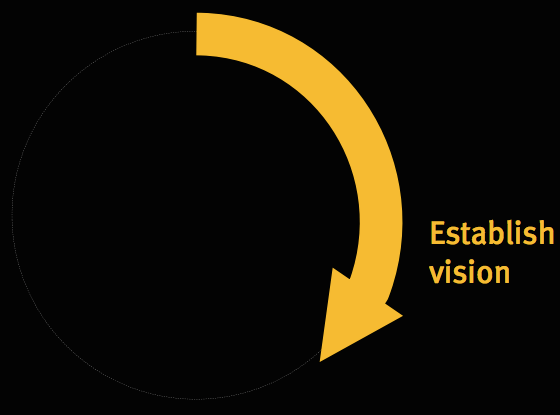Last week our team has gathered for a focused face-to-face session in a remote location of Abruzzo right in the center of Italy: the Abbey of Santo Spirito d’Ocre. Like early agile-teams we’ve discovered once again the importance of working together in close proximity and the value of keeping a healthy balance between hard work and quality of life. We’ve also found ourselves in love with the product we’re building and happy to share it with others.
Our business is made of small distributed teams organised in startups each one self-sufficient and focused on a specific aspect of our technology (we help business and individuals manage and organise contents being text, data, images or videos).
As peers gathered from different time zones in this unique little monastery of cistercian order we began executing our plan.
And yes, getting to the meeting with a clear agenda did help. All the issues we had in our list had been summarised and shared in a dedicated Trello board. These included mainly the work we’ve been doing in the last years on WordLift our semantic editor for WordPress.
Cistercians (at least in the old days) kept manual labour as a central part of their monastic life. In our case we’ve managed to structure most of our days around three core activities: business planning, bug fixing and software documentation. At the very basis we’ve kept the happiness of working together around something we like.
Emphatic vs Lean: setting up the Vision.
Most of the work in startups is governed by lean principles, the tools and the mindset of the people have been strongly influenced by the work of Eric Ries who first published a book to promote the lean approach and to share his recipe for continuos innovation and business success.
After over three years of work on WordLift we can say that we’ve worked in a complete different way. Lean demands teams to get out of the building and look for problems to be solved. In our case, while we’ve spent most of our time “out of the building” (and with our clients) we’ve started our product journey from a technology, inspired by the words of Tim Berners Lee on building a web for open, linked data and we’ve studied all possible ways to create an emotional connection with bloggers and writers.
Not just that, we have also dedicated time in analyzing the world of journalism, its changes and how it will continue evolving according to journalistic celebrities like David Carr (a famous journalist of the New York Times who died early on this year) and many others like him as well as the continuously emerging landscape of news algorithms that help people reach the content they want.
 Understanding that WordLift, and the go-to-market process that will follow shall be empathy-driven rather than lean is one of the greatest outcome of our “monastic” seminar in the valley of L’Aquila.
Understanding that WordLift, and the go-to-market process that will follow shall be empathy-driven rather than lean is one of the greatest outcome of our “monastic” seminar in the valley of L’Aquila.
By using an empathy-driven expression: we’ve finally set the Vision.
Organise the Workflow: getting things done.
As most of today’s open-source software, WordLift is primarily built over GitHub.
While GitHub can be used and seen as a programming tool, GitHub – being the largest digital space for collaborative works – embeds your workflow.
While working at the monastery we’ve been able to discuss, test and implement a GitFlow workflow.
The Gitflow Workflow is designed around a strict branching model for project releases. While somehow complicated in the beginning we see it as a robust framework for continuing the development of WordLift and for doing bug fixing without waiting for the next release cycle.
Documentation. Documentation. Documentation.
Writing (hopefully good) software documentation helps the users of any product and shall provide a general understanding of core features and functions.
The reality is that, when documenting your own software, the advantages go way beyond the original aim of helping end-users.
By updating WordLift documentation we were able to get a clearer overview of all actions required by an editor in composing his/her blog post and/or in creating and publishing the knowledge graph. We also have been able to detect flows in the code and in the user experience.
Most importantly we’ve found that writing the documentation (and this is also done collaboratively over GitHub) can be a great way to keep everyone in sync between the “Vision” of the product (how to connect with our users) and the existing implementation (what are we offering with this release).
Next steps
Now it’s time to organise the team and start the next iterations by engaging with the first users of this new release while fine-tuning the value proposition (below the emphatic view of @mausa89 on the USP of WordLift).
As this is the very first blog post I’m writing with WordLift v3 I can tell you I’m very happy about it and if you would like to test it too join our newsletter...we will keep you posted while continue playing!
[hewa_player asset_id=”156″]
The closing of this blog post is @colacino_m‘s night improvisation from the monastery.
Retreat at the Monastery



